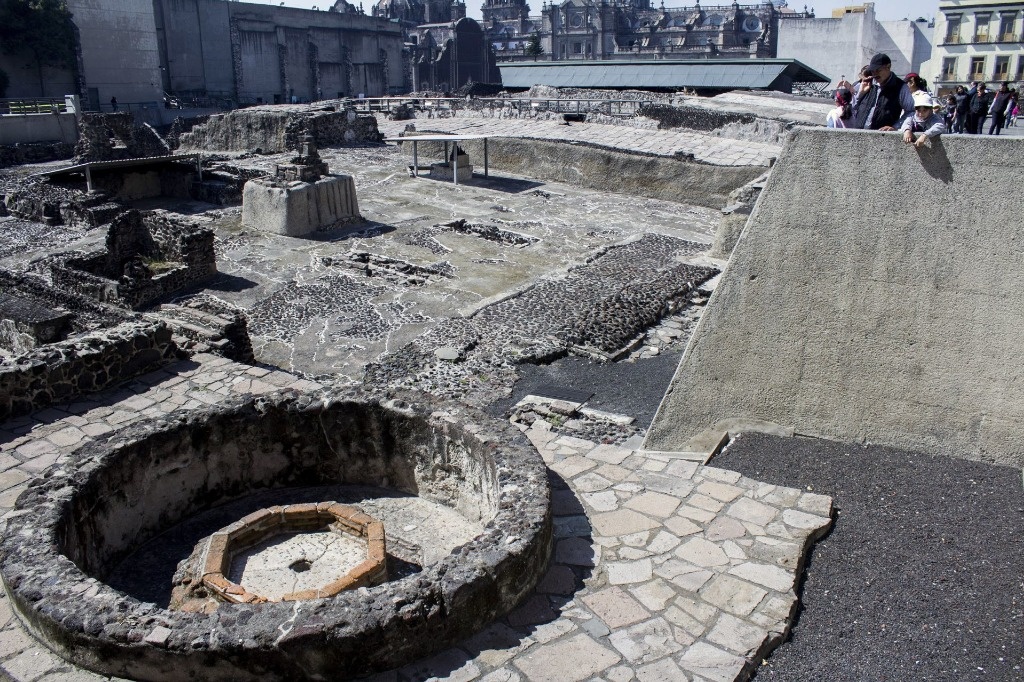Thanks to Alberto Beltrán I met the anthropologist and philologist Ángel María Garibay K., who, besides being a priest (angry and impatient), turned out to be an extraordinary devotee of our pre-Hispanic past. His disciple Miguel León-Portilla always treated my ignorance with philosophy, but I was afraid of Father Garibay, who responded to my ignorance with monosyllables, although in the end he even offered me a smiling glass of water. I continued interviewing anthropologists and archaeologists over the years, and if I had to summarize what I learned, it was the immense astonishment of the scholars for Mexico’s pre-Hispanic past. That is why I now love the enthusiasm of Édgar Arturo Mendieta Gutiérrez, discoverer of a codex.
–I am your servant, Lawyer Edgar Arturo Mendieta Gutiérrez. I come from the municipality of Nezahualcóyotl, State of Mexico. Currently, I am the legal deputy director of the Municipal Treasury of Nezahualcóyotl, but the most important thing of all is that I am the discoverer of a codex.
I love the pride of Mendieta Gutiérrez who, without further ado, knocks on the door of the house and assures me that nothing excites him as much as the pre-Hispanic past.
–I’m going to tell you a little about my story, because Father Soto, who was in Nezahualcóyotl for 50 years and then in the Basilica of Guadalupe, taught me how to investigate. While we were talking, he told me to look for the origin of my surname and explained to me: Hey, you’re Mendieta. Why don’t you look into your name and its origins, which date back to the 16th century?
In doing so I discovered that there is indeed a Mendieta Codex.
–Who was Mendieta?
–Brother Jerónimo de Mendieta was born in Spain in 1525.
–When did you arrive in Mexico?
–He arrived in Veracruz in 1554, sent by the Spanish crown. He was about 28 years old during the reign of Charles V, and almost from his arrival in Mexico, the friar discovered another codex that he lovingly cared for and protected against the ferocity of time and human stupidity. This codex is part of the ecclesiastical Indian work and history that, in its entirety, reaches five volumes that were suppressed by order of the crown.
The historian Joaquín García Icazbalceta discovered these books in Spain and brought them to Mexico, where they received the honors of the press in 1870. They were published for the first time after 300 years, thanks to Mendieta y Núñez, who found a publisher, although I do not know which printing house it was. However, within the same story, I know that Friar Jerónimo de Mendieta transcribed it in Toluca in 1580.
–¿1580?
–Imagine that atmosphere with candles as the only light, the arduous, laborious writing of this fascinating story. There are very few references to the writing process in which many abuses were committed.
–Why? Who prevented Friar Jerónimo de Mendieta from writing and who preserved the codex?
–When he began to write the first of the five volumes of this ecclesiastical history, Brother Jerónimo took every precaution. His story takes us through the so-called Conquest of Mexico, which I consider to have been a fusion of two great cultures, and explains to us that we are the result of a mixture. The story tells us how Cortés arrives in Veracruz, Tlaxcala, Texcoco and moves to Toluca, where he begins to write the diary intended for the Spanish royalty.
–How good that we had extraordinary chroniclers!
–In Toluca there is a church behind the cathedral where we can see a plaque stating that it was founded in 1575. Some reliefs can still be seen inside the pyramid-shaped church itself and we have fragments of the history written by Friar Jerónimo de Mendieta, which was suppressed by order of King Charles V.
–Suppressed why?
–Because it does not benefit Spain. Charles V reads it and orders Torquemada to suppress everything written by Jerónimo de Mendieta, but another friar pirates Jerónimo’s work and publishes it, also suppressing the negative aspects, but taking away all credit from the true author…
–However, Mr. Mendieta, most of the friars were not so bad or so plagiarist; many dedicated themselves to evangelizing and protecting the Indians as Orozco painted them in the Cabañas hospice.
–Yes, but to teach from the religious point of view of Spain. There was a great difference between the Spanish priests and the indigenous priests, who, despite having the same hierarchy, never enjoyed the same privileges. Let us remember what Friar Juan de Zumárraga did: he burned alive the grandson of Acomixtli Nezahualcóyotl. In Texcoco, 186 people died.
These historical facts are to be suppressed, forgotten, hidden, eliminated, erased from our history. The invasion of Tenochtitlan is continually hidden and falsified. At that time, the religious people who crossed the sea were very vulnerable and suffered terrible infections. There was a great pandemic in the 16th century, much worse than the one we experienced in 2020, because many people died then. That is why I came to look for her, because I want the Texcoco massacre to be denounced again and again…
–It was already reported years ago…
–There is still a lack and in this context, the Codex Mendieta –in my personal opinion– it captures a historical fact from someone who lived it in Tenochtitlan, but it does not sufficiently emphasize the horrific truth of the infamous event. It is an absolute massacre that history has overlooked. In my opinion, it is an ethnocide. The word ethnocide means to end a culture. There is a beautiful anonymous poem that Miguel León-Portilla mentions: They stole our fruits, cut our branches, burned our trunk, but they could not kill our roots.
. For this reason, thanks to our roots, our thinking and philosophy survive, and I believe that Mexicans are warriors, both men and women, so we have to preserve our history here and now in Mexico and prevent it from being falsified and preserved in Spain.
That is why I repeat to you that my name is Edgar Arturo Mendieta Gutiérrez, and I have a law degree, and currently, I am the legal deputy director of the municipality of Nezahualcóyotl, of the municipal treasury, and my Mexican identity is unique and my discovery is unique, and I have to be taken into account by everyone and by you…
–Where are the five volumes that you defend so passionately stored?
–They were in Spain and now they are in Mexico. The Mexican historian Joaquín García Icazbalceta brought them back in 1870, but the original stayed in Spain, and that is the one we want back, because the original has beautiful engravings made in Texcoco. It belongs to us, it is ours, because in the 16th century we were New Spain.
–Icazbalceta couldn’t recover the original?
–It was very difficult to write at that time; he sent letters and letters to the leaders of the Spanish crown, he began to rise and was able to go to Toluca, to Michoacán, to Puebla to found Tecamachalco, Puebla and Temoaya.
“This story, Elenita, is not known, even the state of Mexico ignores it. We are talking about Codex Mendieta and almost no one reacted, hence the importance of spreading the figure of Friar Jerónimo de Mendieta, great defender of the indigenous people. He met Motolinía, who arrived in 1550 to talk with Friar Pedro de Gante, the first to raise the School of Arts in Texcoco with Friar Juan de Zumárraga. From Spain, two expeditions came that replaced the Mexica proposal with the Christian one, although much of the Mexican thought was integrated into the Catholic religion due to the insistence of the Spanish friars.
Cihuacóatl, the serpent woman, is found in Tepeyac; she is the deity of continuity. Pre-Hispanic history is the basis of all Catholicism in Mexico; today’s Catholicism is also built on the Olmec and Toltec cultures… and the Catholic Church is built on our great pre-Hispanic culture. No one has been able to eliminate our philosophy, much less our valuable history, despite all the massacres.
#PreHispanic #history #Catholicisms #Elena #Poniatowska
– 2024-08-19 01:32:16


